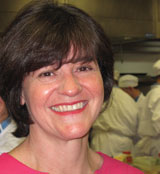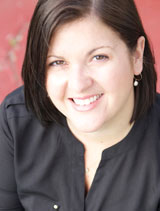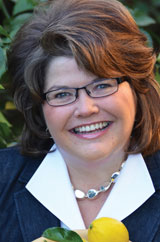Volume 30 · Number 3 · Spring 2013
Foodies: Where they are now
Numerous Aggies from a variety of disciplines ranging from English to zoology have gone on to become chefs or restaurateurs. Here’s a glimpse at a few alums from food science, nutrition and related majors.

Paula Figoni
Paula Figoni, M.S. ’82 (food science), is a faculty member in the College of Culinary Arts of Johnson & Wales University in Providence, R.I., and author of the textbook How Baking Works.
Fascinated by the science of cooking long before it was cool to be a foodie, Figoni was intrigued by the behavior of ingredients — why egg whites stiffen when beaten or react differently in the presence of acidic ingredients.
“If it weren’t for egg whites, I would never have been a food scientist,” she said.
She worked in product development for Pillsbury and Ocean Spray before joining the faculty at Johnson & Wales. Many of her students will go on to be restaurant chefs, research chefs or dieticians, but all will need to be able to speak the languages of food science and the culinary arts.
“It’s all about the food — it’s about it tasting good, and making it in large quantities without sacrificing taste,” she says. “That’s where you need the blending of science and culinary.”

Melissa Furano
Melissa Furano ’05 (human development/community nutrition) took Liz Applegate’s Nutrition 10 class, believed to be the largest undergraduate nutrition course in the nation.
“It really piqued my interest in food and the body,” recalled Furano. So after graduating from UC Davis, she went on to study general culinary at the California Culinary Academy in San Francisco.
Intent on avoiding the high stress, long hours and low pay of restaurant kitchens, she decided to become a private chef and caterer. Furano now owns her own business, Sweet Melissa’s Personal Chef Services, which accommodates up to 75 guests.
Today, she is also the No. 1 chef with The Munchery, a San Francisco-based business that prepares and markets meals for customers to purchase and eat at home.
“Everybody is a foodie these days,” Furano said. “They’ve watched the Food Network and been exposed to food trucks. As a chef you have to work harder because your customers are more knowledgeable.”

Amy Myrdal Miller
Amy Myrdal Miller ’94 (dietetics), is director of programs and culinary nutrition at the Culinary Institute of America. While assigned to the Greystone Campus in the Napa Valley, she has institute-wide responsibilities.
After earning her master’s degree in nutrition communications at Tuft’s University, she worked for Fleishman-Hillard, the Rippe Lifestyle Institute, Dole Foods and the Walnut Commission, and co-authored Healthy Heart for Dummies.
She serves as the Culinary Institute’s industry association spokesperson and directs its continuing education program for chefs from major restaurant chains and other volume food-service operations.
“We’re helping these chefs look at how small changes in their restaurants will have enormous impact for the healthfulness of what they produce but also tremendous impacts on other areas of the industry,” Myrdal Miller said. “For example, what would be the impact on the meat industry if McDonald’s were to take a 6-ounce hamburger patty and start making that a 4-ounce patty?”
She also is a principal investigator on the Healthy Flavors Research Initiative, a partnership between the institute’s Greystone campus and UC Davis’ Foods for Health Institute.
In the initiative’s first project, she worked with food science professors Jean Xavier Guinard, a sensory scientist, and Bruce German, director of the Foods for Health Institute, on a study testing how consumers would react to traditionally meat-based products when half or more of the meat was replaced by mushrooms (Participants gave the products two thumbs up, she says.)
Back to Here Come the Foodies!
